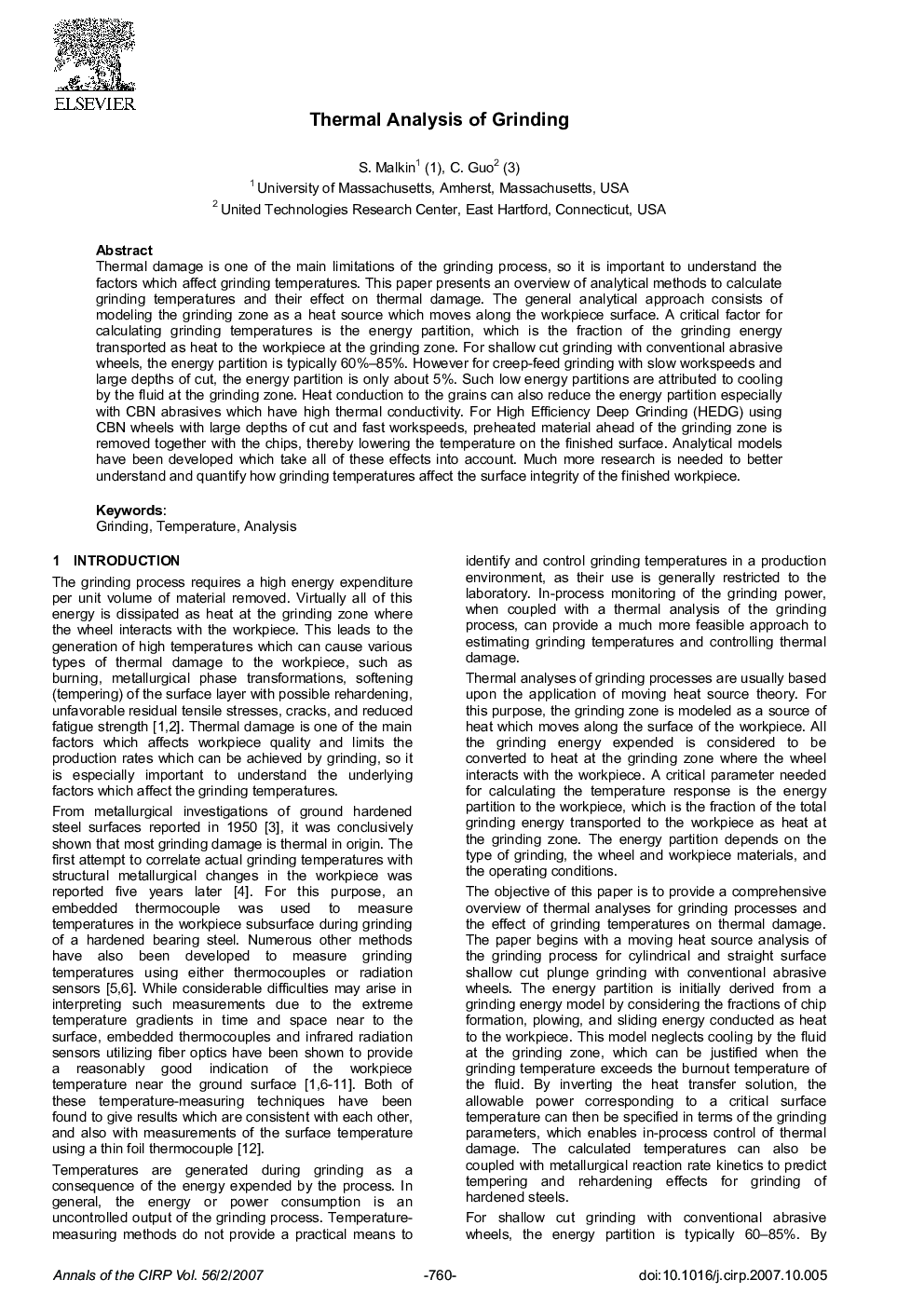| Article ID | Journal | Published Year | Pages | File Type |
|---|---|---|---|---|
| 1679216 | CIRP Annals - Manufacturing Technology | 2007 | 23 Pages |
Thermal damage is one of the main limitations of the grinding process, so it is important to understand the factors which affect grinding temperatures. This paper presents an overview of analytical methods to calculate grinding temperatures and their effect on thermal damage. The general analytical approach consists of modeling the grinding zone as a heat source which moves along the workpiece surface. A critical factor for calculating grinding temperatures is the energy partition, which is the fraction of the grinding energy transported as heat to the workpiece at the grinding zone. For shallow cut grinding with conventional abrasive wheels, the energy partition is typically 60%–85%. However for creep-feed grinding with slow workspeeds and large depths of cut, the energy partition is only about 5%. Such low energy partitions are attributed to cooling by the fluid at the grinding zone. Heat conduction to the grains can also reduce the energy partition especially with CBN abrasives which have high thermal conductivity. For High Efficiency Deep Grinding (HEDG) using CBN wheels with large depths of cut and fast workspeeds, preheated material ahead of the grinding zone is removed together with the chips, thereby lowering the temperature on the finished surface. Analytical models have been developed which take all of these effects into account. Much more research is needed to better understand and quantify how grinding temperatures affect the surface integrity of the finished workpiece.
